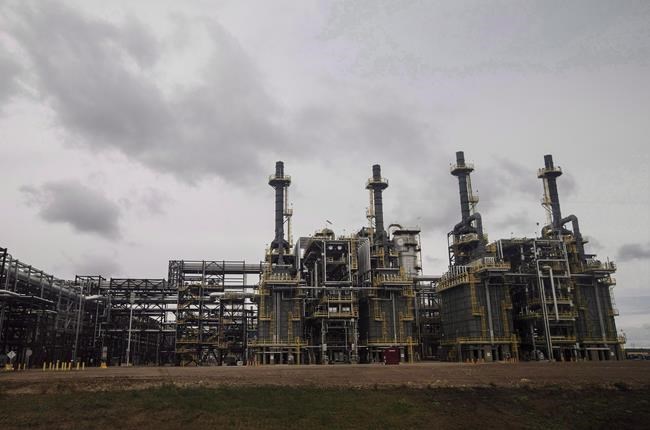CALGARY — A company investigating the use of radio frequency energy as a cleaner and cheaper way to produce bitumen from the oilsands says it has the financial means to proceed with a commercial pilot project.
A recent commitment of $5 million from Alberta Innovates, a provincial research agency, brings its direct funding to $19 million and fully funds its proposed pilot, Calgary-based Acceleware Ltd. said Wednesday.
Its other funders include Suncor Energy Inc. and an unnamed second major oilsands producer with up to $2 million each, $5.25 million from Sustainable Development Technology Canada and $5 million from Emissions Reduction Alberta.
"The COVID year was pretty good for us because we were able to secure a site for that commercial pilot, we were able to get it approved by the Alberta Energy Regulator and now with this last little bit of funding, we've got all the financial resources we need to pull it off," said CEO Geoff Clark in an interview.
"Now it's just executing, drilling some wells, putting some equipment on site and seeing if it works."
The company says a test site at Marwayne in east central Alberta has been cleared, equipment and materials have been ordered and service company partners selected.
When its backing was announced in December, Suncor senior vice-president Sandy Martin said the company is innovating to meet evolving energy needs and environmental challenges.
“There isn’t an easy or quick solution to transform to a low-carbon energy future. It will take original thinking, collaboration and commitment,"' he said at the time.
Acceleware's RF XL process uses electromagnetic energy to heat an underground oil-bearing reservoir to mobilize the heavy oil and allow it to flow into a parallel well to be pumped to surface, thus eliminating the need for injecting steam as is currently extensively done in the oilsands.
The company says it expects construction at the site to be completed by June, followed by about six months of reservoir heating.
"We'd like to produce some oil … but really what we want to do is be monitoring that temperature downhole and see if it matches our simulations," Clark said.
The company says the technology eliminates the need for fresh water, reduces greenhouse gas emissions, uses no added solvents and requires less land use.
Clark said the technology's potential customers include existing oilsands producers planning bolt-on expansions and smaller newcomers looking for a cheaper, scalable way to begin production. It's hoped the process will also attract attention from other domestic and international heavy oil producers.
This report by The Canadian Press was first published March 17, 2021.
Companies in this story: (TSXV:AXE)
Dan Healing, The Canadian Press



